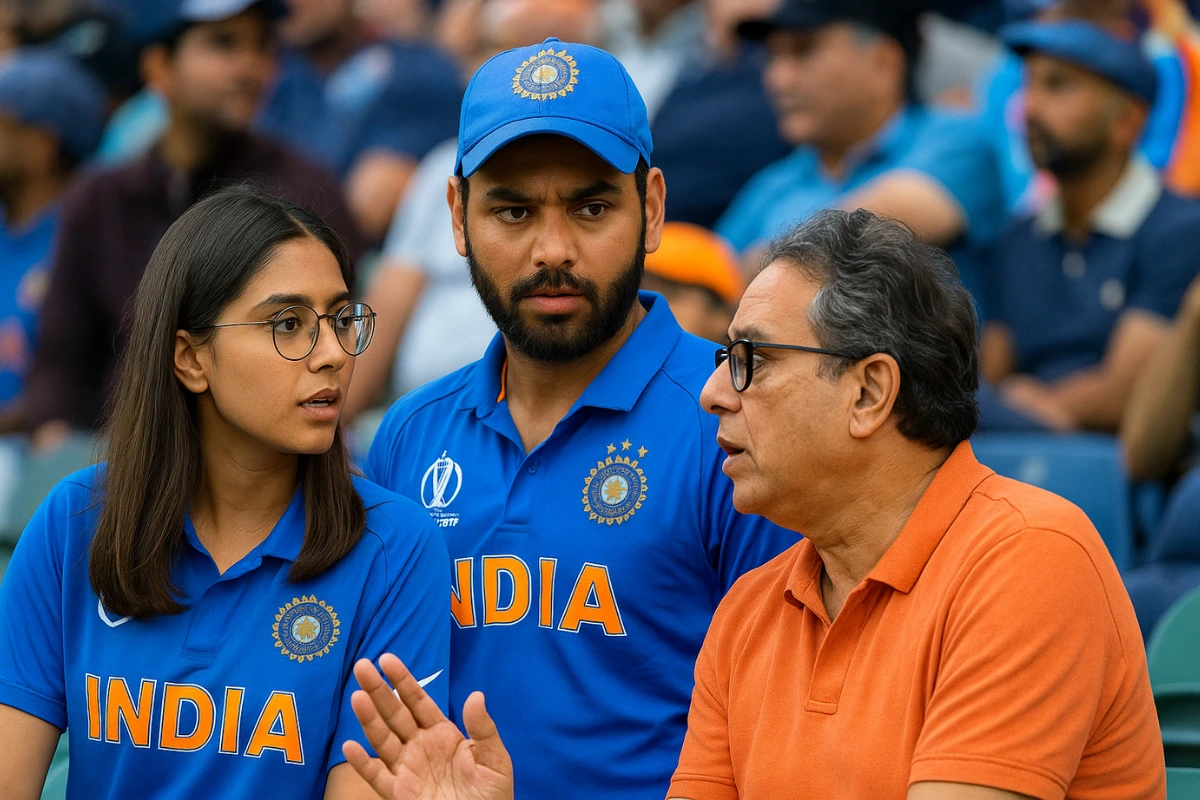Introduction
The game of cricket has constantly been evolving, with new rules and technology continually shaping how it’s played. One of the most debated topics in recent years has been the use of substitutions. Traditionally, the sport has been conservative in allowing replacements for injured players during a match. However, Rishabh Pant’s unfortunate injury during a crucial series has reignited the conversation about the need for like-for-like substitutions in cricket. As fans and experts alike rally behind this idea, it’s time to explore how this shift could transform the game.
Understanding the Traditional Rules
Under the current regulations of the International Cricket Council (ICC), substitutions are allowed, but only under strict conditions. Players can be replaced for injury-related reasons, but the substitute is typically not allowed to bat, bowl, or keep wicket. This creates a significant gap in terms of team balance, as teams are left vulnerable if a key player is injured, especially in crucial moments of a match. ICC
The Role of “Super Sub” and “Concussion Sub”
The ICC has allowed substitutions for concussions in recent years, marking a shift from its previous stance. The introduction of the concussion substitution rule was a groundbreaking moment for the sport, as it ensured that players could be replaced if they suffered a head injury during play, ensuring their health and safety. However, the rest of the substitutions still leave much to be desired.

Pant’s Injury Shakes Up Indian Cricket
Rishabh Pant, one of India’s most dynamic players, suffered a devastating injury during a car accident that has ruled him out of several crucial tournaments, including the 2023 ICC World Cup. His admirers and squad both feel his absence very much. The fact that Pant was integral in multiple facets of the game—batting, keeping wickets, and fielding—highlights the challenges faced by the Indian team in his absence.
The Call for Like-for-Like Replacements
Rishabh Pant’s injury has intensified the push for a rule change that would allow teams to make like-for-like substitutions. This would enable teams to replace a player with another who can perform similar roles, ensuring the team maintains its balance and competitiveness even after a player is injured. This proposal has garnered significant support from both players and experts, who believe it would improve fairness in the game.
Current Stance of the ICC
The ICC has shown a willingness to adapt, as seen with the introduction of concussion substitutes. However, there has been little movement on expanding the scope of substitutions, particularly in allowing like-for-like replacements for injuries. The governing body remains cautious, with concerns about how this change might affect the integrity of the game and the balance between bat and ball.
Why the ICC Should Consider This Shift
The argument for like-for-like substitutions is grounded in fairness. In cricket, a single injury can dramatically shift the outcome of a match, especially if it involves a key player. Allowing teams to replace injured players with someone who can perform the same role ensures that the game remains competitive. This is especially important in international tournaments like the World Cup, where the stakes are incredibly high.

Leveling the Playing Field
One of the most significant benefits of like-for-like substitutions would be the leveling of the playing field. Injuries are an unfortunate part of sport, but they shouldn’t have to lead to a team’s downfall. Allowing a like-for-like substitute ensures that an injury doesn’t unfairly disadvantage a team.
Preserving the Integrity of the Game
While some critics argue that substitutions could disrupt the natural flow of cricket, the counter-argument is that injuries already disturb the game. When a team loses a key player, it affects their chances of winning, and a like-for-like substitute would help maintain the integrity of the match, rather than tilting the balance unfairly.
Protection for Players
Another benefit is the protection of players. If a key player like Pant is injured, the team can continue to perform at a similar level without needing to rely on the remaining players to fill the gap. This reduces the pressure on others and prevents further injuries from overexertion.
Concerns About Team Strategy
Critics of like-for-like substitutes argue that it could affect the strategy of the game. Currently, teams plan their lineups based on the available players. If substitutes are allowed, teams could build squads around this rule, leading to changes in selection policies and potentially impacting the dynamics of team composition.
Financial Implications
There could also be financial implications for this shift. Teams may need to invest in additional players, who would be ready to step in as substitutes at a moment’s notice. This could raise the overall costs for international teams, particularly those with smaller budgets or in countries where cricket isn’t as commercially viable.
Football’s Substitution System
In many other sports, like football, substitutions are a common and accepted part of the game. Injuries are handled with on-the-spot replacements, allowing teams to continue without disrupting the balance of play. Cricket could learn from these sports and adopt a similar approach, allowing for fairer play when key players are sidelined.
Rugby’s Approach to Player Replacements
Rugby also offers an interesting perspective on the substitution debate. In rugby, players can be substituted at any time, and there are clear rules for replacements in case of injury. This system allows teams to adapt without compromising the quality of the game, a principle that cricket could also adopt with careful consideration.
Support from Players and Coaches
For the ICC to make a change, there needs to be significant support from players and coaches. Many leading figures in cricket, including former captains and players, have voiced their support for like-for-like substitutions, recognizing the potential benefits for the game.
Global Consensus
The shift to like-for-like substitutes would also require a global consensus. The ICC would need to consult with member nations, ensuring that all cricketing nations agree on the potential changes. This could take time, as different countries may have varying views on how such a rule would impact their team’s strategy and performance.
Conclusion:
Rishabh Pant’s injury has sparked an essential debate about the need for like-for-like substitutions in cricket. The potential benefits are clear—it could level the playing field, preserve the integrity of the game, and protect players from further injury. While there are challenges to implementing this shift, the growing support for this change suggests that cricket may be on the verge of a significant transformation in how injuries are handled. Whether or not this change happens will depend on the willingness of the ICC and the cricketing world to embrace a more modern and flexible approach to substitutions. ICC
FAQs
1. What does “like-for-like substitution” mean in cricket?
A like-for-like substitution refers to the ability to replace an injured player with someone who can perform the same role, ensuring the team remains balanced.
2. Why is Rishabh Pant’s injury so significant?
Pant’s injury is significant because he was a key player for India, involved in batting, wicket-keeping, and fielding. His absence highlights the challenges of not having a like-for-like substitute.
3. How do other sports handle player substitutions?
Sports like football and rugby allow for substitutions throughout the game, ensuring teams can adapt to injuries without compromising the quality of the match.
4. Could like-for-like substitutions affect team strategies?
While some worry that substitutions could alter team strategies, the main argument is that injuries already disrupt team dynamics, and substitutes would ensure fairer play.
5. When could we see this change implemented in cricket?
It could take time for this change to be implemented, as it requires consensus from players, coaches, and the ICC, along with careful consideration of its potential impact on the game.
